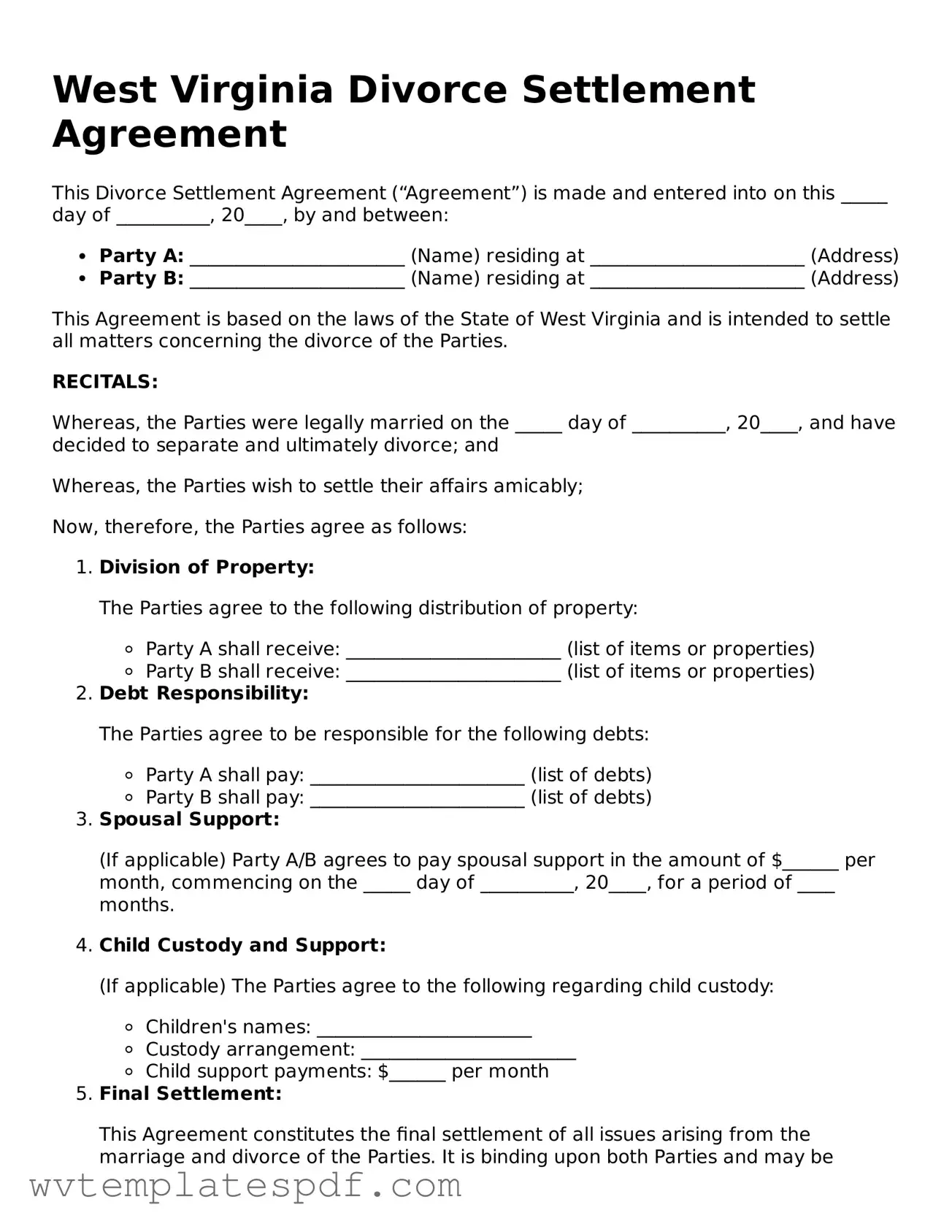The West Virginia Divorce Settlement Agreement form serves as a crucial document in the divorce process, outlining the terms agreed upon by both parties regarding various aspects of their separation. This form typically addresses key issues such as the division of marital property, child custody arrangements, and spousal support obligations. It ensures that both parties have a clear understanding of their rights and responsibilities post-divorce. Additionally, the agreement can cover matters related to child support, visitation schedules, and the handling of debts incurred during the marriage. By documenting these agreements, the form helps to minimize potential conflicts and provides a framework for both individuals to follow as they transition into their new lives. Completing this form accurately is essential, as it can impact the enforceability of the terms in the future. Overall, the West Virginia Divorce Settlement Agreement form is designed to facilitate a smoother divorce process, promoting clarity and fairness for both parties involved.
